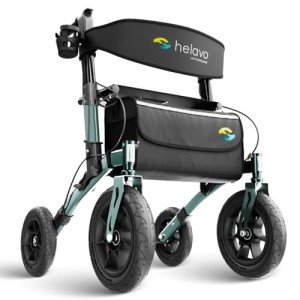The Comfortable Walker: Finding the Right Balance Between Comfort and Mobility
When it pertains to mobility help, there's a huge range of options readily available, but couple of are as crucial as the walker. A comfortable walker can significantly enhance the lifestyle for individuals needing support for walking. In this post, we will dive into the crucial components of a comfortable walker, compare some top models in a detailed table, and provide insights through FAQs to help in picking the ideal walker for your requirements.
What is a Comfortable Walker?
A comfortable walker is developed to offer support while permitting the user to keep balance, posture, and flexibility of motion. The most reliable walkers come with features that focus on comfort, such as adjustable height, cushioned grip handles, lightweight frames, and even extra elements like built-in seats and storage compartments.
Secret Features of a Comfortable Walker
- Adjustable Height: Ensuring the walker is at the right height for the user is necessary to promote great posture and effective mobility.
- Cushioned Hand Grips: Soft manages can reduce pressure on the hands during use, preventing tiredness and improving convenience.
- Weight Capacity: Selecting a walker that accommodates the user's weight can enhance stability and security.
- Wheels vs. No Wheels: Some walkers feature wheels for simpler maneuverability, while others are developed without wheels for more stability.
- Storage Options: Walkers with baskets or pouches help users carry personal items with ease.
Let's take a closer look at some of the most popular comfortable walkers on the marketplace.
Contrast Table: Comfortable Walkers
| Walker Model | Adjustable Height | Weight Capacity | Wheel Type | Additional Features | Price |
|---|---|---|---|---|---|
| Invacare Walker | Yes (32"-37") | 300 lbs | 2 front wheels | Foldable, convenience grips | ₤ 78.00 |
| Drive Medical 10210 | Yes (29"-38") | 300 pounds | 4 wheels | Lightweight aluminum, padded seat | ₤ 89.99 |
| Hugo Walker | Yes (32"-38") | 300 lbs | 4 wheels | Removable storage bag, padded backrest | ₤ 85.00 |
| Medline Rollator | Yes (30"-37") | 350 pounds | 4 wheels | Foldable, cushioned seat | ₤ 99.99 |
| Lumex Walkabout Junior | Yes (30"-36") | 250 pounds | 4 wheels | Adjustable backrest, seat, and deals with | ₤ 119.00 |
Summary of Walker Features
- Weight Capacity: All walkers noted have a capacity varying from 250-350 pounds, essential for making sure security and stability.
- Wheeled vs. Non-Wheeled: While 4-wheeled walkers provide easier movement, they generally need a little more strength to navigate.
- Foldability: Most designs are designed to be portable and easy to keep when not in use.
Health Benefits of Using a Comfortable Walker
A comfortable walker can provide many health benefits, including:
- Enhanced Stability: Protects users from falls, which is necessary for maintaining self-reliance.
- Increased Mobility: Facilitates easier motion and involvement in day-to-day activities, reducing seclusion.
- Enhanced Posture: Encourages proper posture and body alignment, reducing strain on the back and joints.
- Strength and Endurance: Using a walker can help reinforce core and leg muscles in time, boosting total mobility.
Selecting the Right Walker
Picking the proper walker is vital for convenience and performance. Here are some elements to consider:
- Consult with a Healthcare Professional: Always begin with professional guidance, particularly if there are specific medical conditions influencing mobility.
- Test for Fit: If possible, try numerous models to evaluate which fits best in regards to height and balance.
- Monitor User's Needs: As mobility conditions change, updating the walker may end up being required.
- Evaluate Storage Needs: Consider personal items that might need to be carried along and choose if built-in storage is necessary.
Frequently Asked Questions About Comfortable Walkers
Q1: What if my walker does not feel comfortable?
A1: Many walkers come with adjustable heights and devices. If pain continues, talking to a healthcare supplier can assist determine underlying concerns.
Q2: How do I keep my walker?
A2: Regularly inspect the screws, wheels, and grips for wear and tear. Tidy it utilizing moderate soap and water, preventing abrasive products.
Q3: Can I use a walker on irregular surface areas?
A3: While lots of walkers are flexible, it's necessary to choose a walker with sturdy wheels and brakes for stability on uneven terrain.
Q4: Are there walkers developed for outdoor usage?
A4: Yes, some walkers are created with larger wheels and shock absorbers, making them ideal for outdoor surfaces.
Q5: How often should I change my walker?
A5: If your walker shows signs of wear, or if your mobility requires modification, it may be time to buy a brand-new design for security and convenience.
A comfortable walker is an indispensable tool that allows people to keep their independence and improve their lifestyle. With Walking Aid of features and models available, every user can discover a walker that fits their special needs. By prioritizing convenience, stability, and functionality, a well-chosen walker can cause a more enjoyable and active lifestyle. Always keep in mind that investing in mobility help is an investment in general well-being. Whether you're helping yourself or an enjoyed one, comprehending the importance of convenience in mobility help is vital for making the ideal option.

